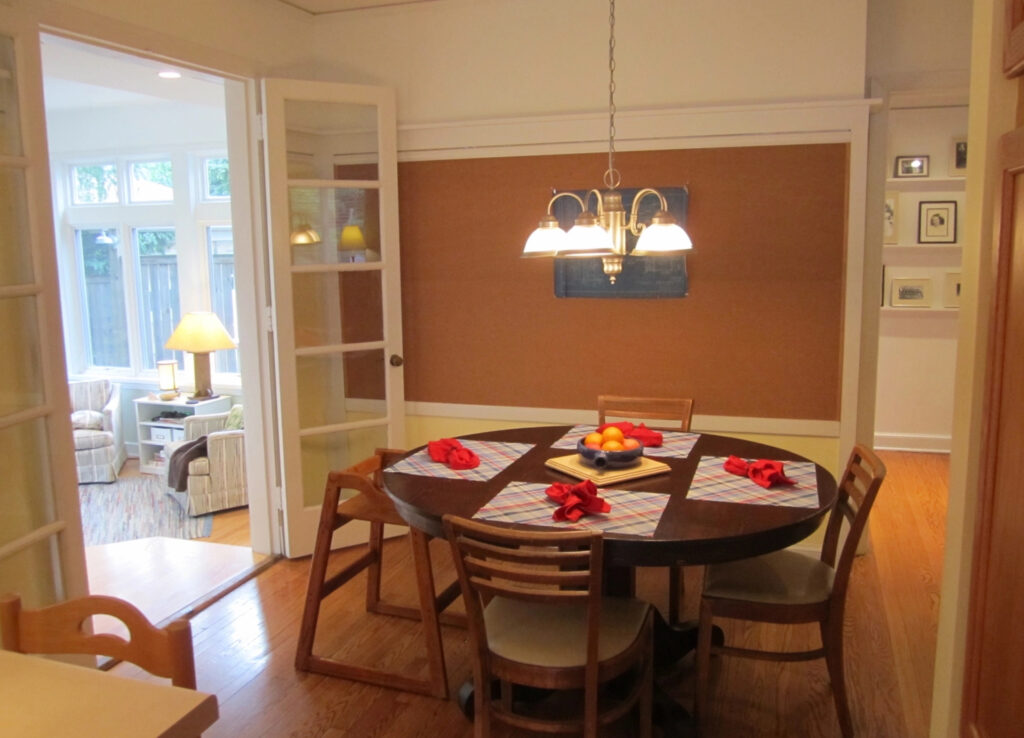Imagine yourself in a windowless, featureless room, like an exam room at the hospital. There is a light switch on the wall that turns on the overhead fluorescent fixtures. You can have bright white light or pitch dark at the flick of a switch.
And those are your only two choices. So most of the time you’re there, you have bright white light. Fortunately, it’s a medical exam room lit for seeing skin rashes and other maladies. You don’t live here. Or do you?
Now imagine that you stay in the exam room, and you need to eat breakfast in it. After a few hours of work in the same room, you welcome dear friends for dinner. And later, you pick up a magazine to unwind, all in the same room.
Sounds silly, doesn’t it? But most of our homes are lit one way. On or off. Bright or dark. Intuitively you probably know this is wrong, that there must be a better way. But it may be confusing to ask for- how do you know what you want? How do you know what kind of light is right?
The answer is often that we don’t always know what kind of light will be right for every moment of every day. The only way to ensure the right kind of light for doing, knowing, and feeling is to make sure we have light that changes. Moment by moment, day by day, we need the ability to tailor our environment to suit our present needs.
If you wore the same clothing every day- let’s say a long-sleeved shirt and pants- you would be comfortably dressed some of the time. In the heat of summer, however, you might be dressed too warmly. In the cold of winter, your shirtsleeves may leave you shivering.

Our needs for lighting change, too. We might want bright light to wake in the morning, more subtle light for dinner, and very soft light for preparing a late night snack.
And our eyes change as we age, too. I need twice as much light as my teenage son to see as well, and my parents in their 70’s need twice as much as I do. That means my parents need a full four times as much light as my son needs. If I light the house for my needs today, will it still work for me in twenty years when my eyes are ageing?
If you are back in that hospital exam room with no windows, then you pretty much need your lights on all the time. At home, however, we are often fortunate enough to have windows. Over the course of a single day, the amount of light coming in our windows can vary considerably. Does our electric light have the same range? If our lighting cannot adapt to varying amounts of natural light, we’re often going to be using too much or too little light, wasting energy or feeling the darkness.
Finally, we need light that changes because our moods change. If I light a dozen candles in the house for vacuuming the carpet, you’ll think I’m rather strange. If I light them when you come to dinner, you’ll think I’m romantic. The difference is mood. Conversely, if I invite you over for a romantic dinner and fill the dining room with large bright fluorescent fixtures, you’ll have plenty of light to see your food but the glare will give you a literal headache. To make our home comfortable, we need light that changes to reflect or influence our mood.
Take a look around you right now. Is there light for doing? Can you see what you’re doing, or are you struggling to see because there is not enough light- or glare on your screen?
Is there light for knowing where you are, where you are going, and who is with you?
Is there light for feeling good? Do you feel relaxed and comfortable?
Is there light that changes? Will the light around you adapt to changing daylight conditions, or changing moods?
If you are missing one or more of these kinds of light, then stay tuned for future posts with helpful advice. If you have all these kinds of light, then there’s just one more question to ask. Does the light in the room tell your story?
